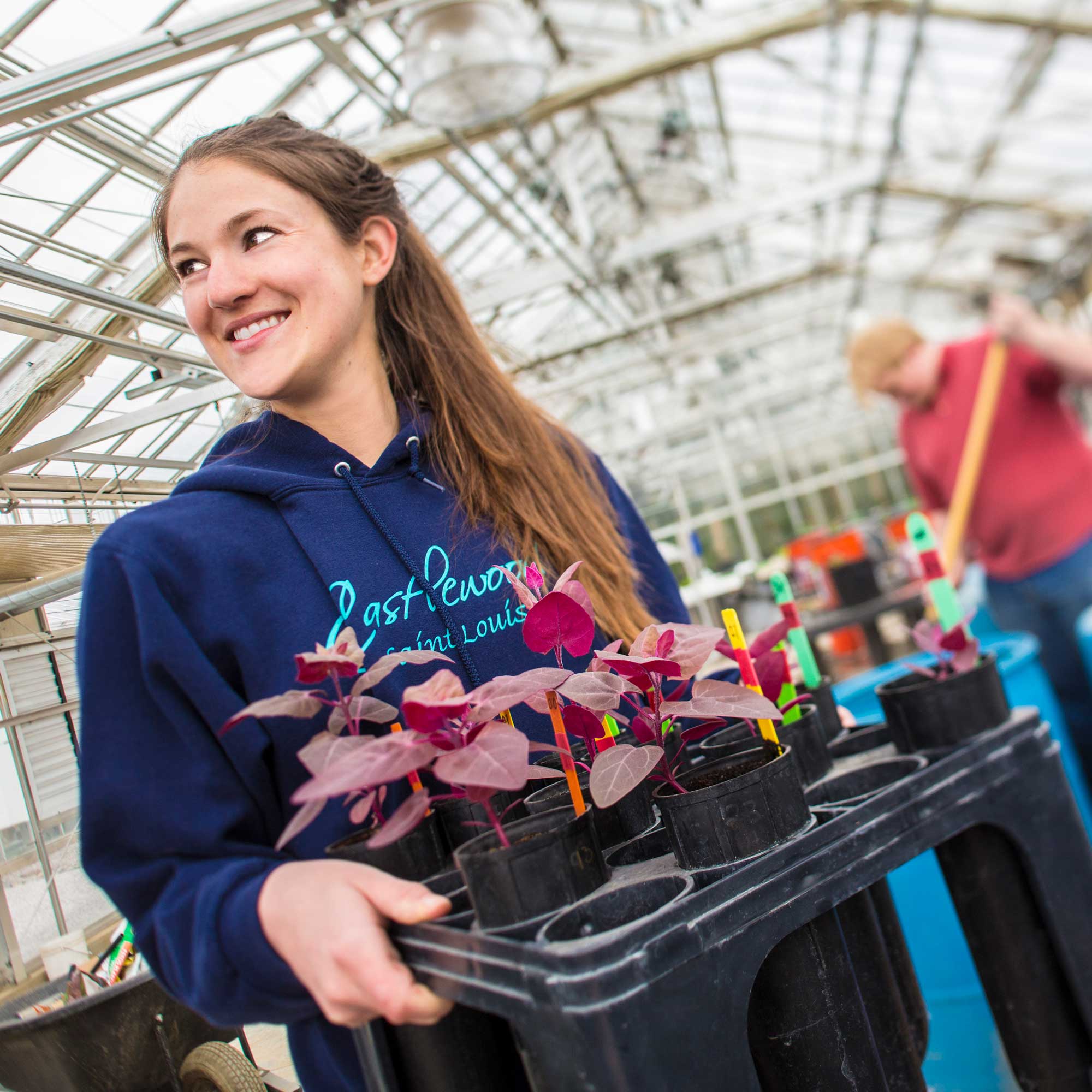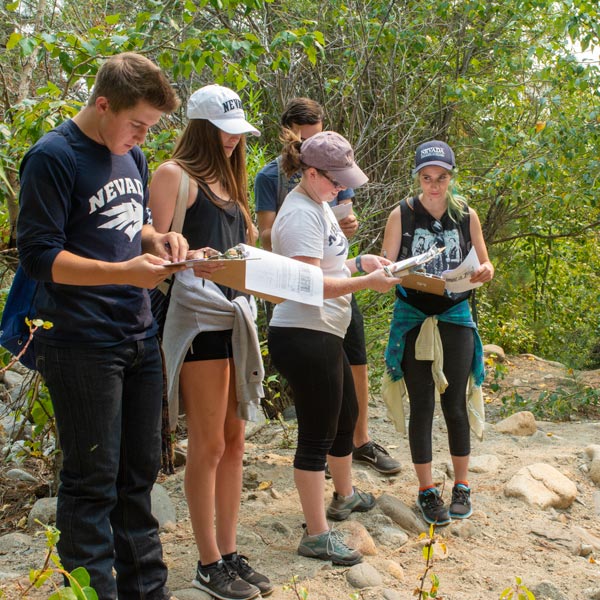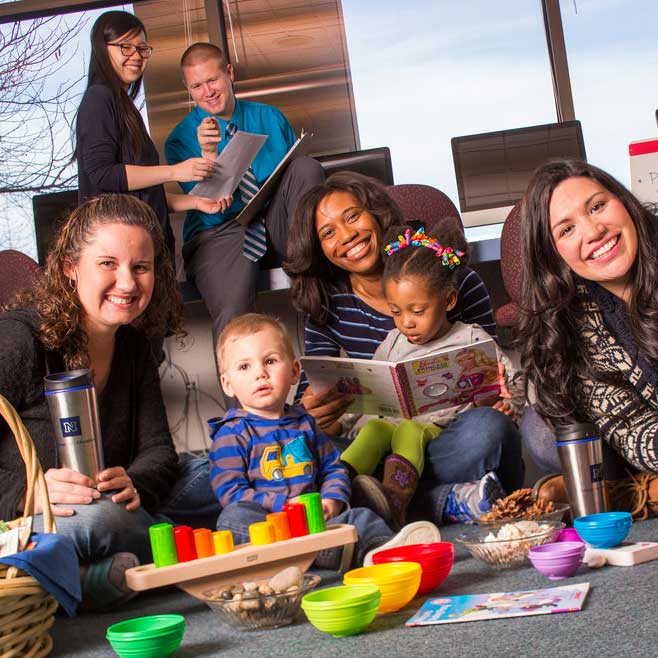In this edition
- Big data modeling, forest fuels mapping aids in mitigating catastrophic wildfire risk
- University launches line of products made from wool from College’s Rafter 7 sheep
- Extension creates new position aimed at increasing access to health and nutrition programs
- CABNR Immersed event introduces University students to Nevada agriculture
- Nevada 4-H youth showcase projects, develop skills at State Expo
- The not-so-micro problem of plastic pollution, and how you can help
About our College
A founding college of the University, we have a long tradition of excellence in teaching, research and engagement programs that benefit the health and economic vitality of Nevada. We offer programs in:
- agriculture, horticulture, rangeland and veterinary sciences
- biochemistry and molecular biology
- children, youth and families
- community and economic development
- health and nutrition
- natural resources and environmental science
Big data modeling, forest fuels mapping aids in mitigating catastrophic wildfire risk
College researchers team with CAL FIRE and California Air Resources Board
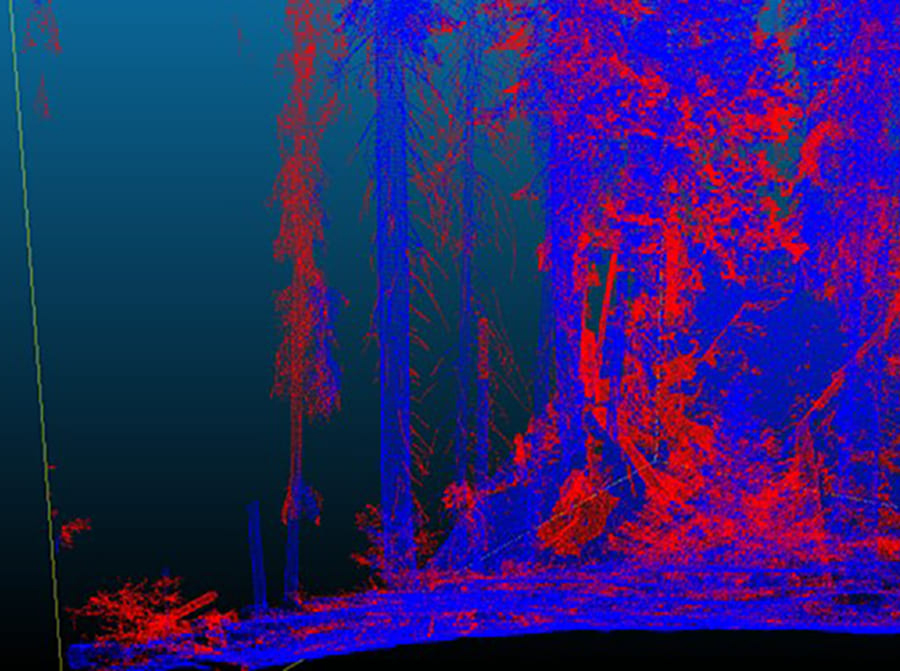
Ladder fuel loss from the 96,000-acre Ferguson Fire in the Sierra Nevada in 2018 is captured with LiDAR. Red indicates biomass that was consumed in the fire, blue indicates biomass that survived the fire.
Modeling and mapping fire-vulnerable forest vegetation across millions of acres in California, scientists in the College are using a variety of new technologies with massive amounts of data and computational power. This research will help optimize fuel management to reduce fire risk, support carbon sequestration and improve water quality.
The research is led by Associate Professor Jonathan Greenberg and Assistant Professor Erin Hanan and funded by the California Air Resources Board, CAL FIRE and our Experiment Station. It will:
Produce state and local fuel maps
“Analyzing the amount and location of fuel accumulation allows us to understand the situations where you go from low-intensity ground fires, to high-intensity crown fires. Crown fires are the real danger – those are the wildfires where things blow up.
Our department contributes to the science behind fuels management. When a fire does break out, and they will, you want to have already managed the fuels to minimize the risk of catastrophic wildfires.”
- Associate Professor Jonathan Greenberg
Model how to mitigate fire risk
“We are using simulation models to determine when, where and under what circumstances fuel treatments can mitigate the risk of severe crown fire, maintain stable forest carbon, and promote water security for millions of residents across the West.
Models enable us to make predictions not possible with measurements alone. However, models need to be continually confronted with field data. This is where Greenberg’s big data research is crucial.”
- Assistant Professor Erin Hanan
Bringing real solutions in real time
“Being able to capture key data at scale, rapidly process and analyze it, and distribute information to decision-makers and the public requires a new way of thinking. Our team is working with our scientists and campus leadership to evolve Nevada’s capabilities to bring real solutions to real problems in real time.” -Cyberinfrastructure Director Scotty Strachen
University launches line of products made from wool from College’s Rafter 7 sheep
Products made from some of the finest and softest wool in the nation available at the Nevada Wolf Shop
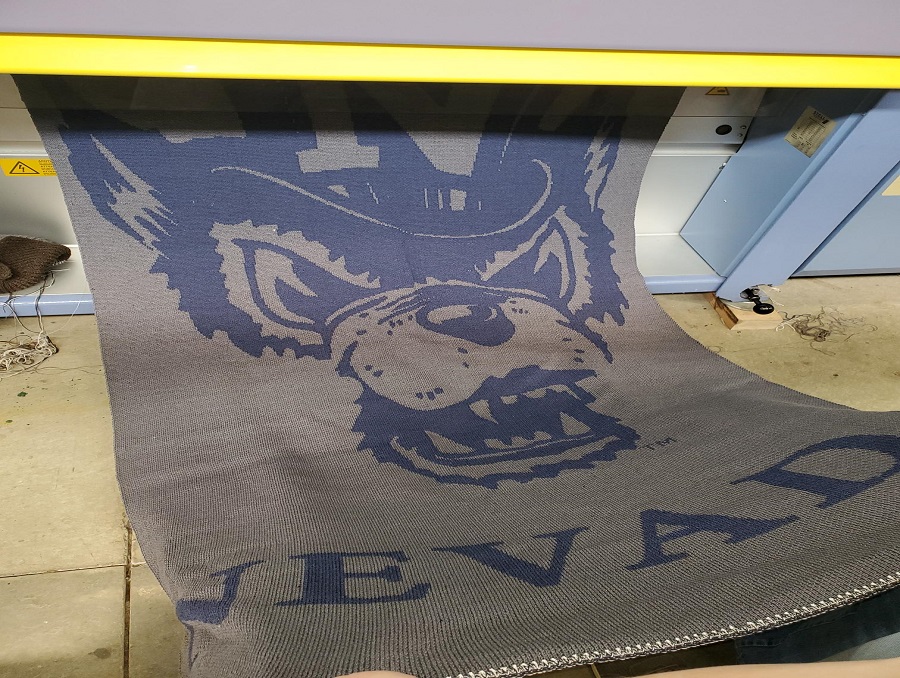
A Nevada Wolf Pack blanket made of the University’s Rafter 7 wool rolls off the production line at family-operated Mountain Meadow Wool Mill. Photo courtesy of Mountain Meadow Wool Mill.
With the holidays just around the corner, the University is offering a new line of Nevada Wolf Pack wool products made from Rafter 7 sheep raised by the College.
Hats, scarves, blankets, sweaters, hoodies, beanies and more will be available at the Nevada Wolf Shop on campus with prices ranging from $24 to $300. But, it’s not just the fact that the products were made from the College’s Rafter 7 sheep raised in Eureka, Nevada, at the College’s Great Basin Research & Extension Center, that make the products special. The wool itself is special.
“These sheep have some of the softest, finest wool in the nation.” said College Dean Bill Payne. “We are excited that, after developing this line of sheep over 30 years ago, we are able to offer Nevadans the opportunity to proudly wear and enjoy some Silver and Blue products made from their wool.”
This is the first time that the University has had products made from the Rafter 7 wool. Supplies are limited, and proceeds support student activities and future Rafter 7 projects.
Adapting to challenging environments
“The Rafter 7 sheep are very well adapted to the harsh, dry Great Basin environment. That’s one of the things the College is trying to do with its work and research – provide animals and crops that can be raised in challenging environments.” – Dean Bill Payne
Extension creates new position aimed at increasing access to health and nutrition programs
Elika Nematian joins Extension as the health and nutrition educator in Clark County
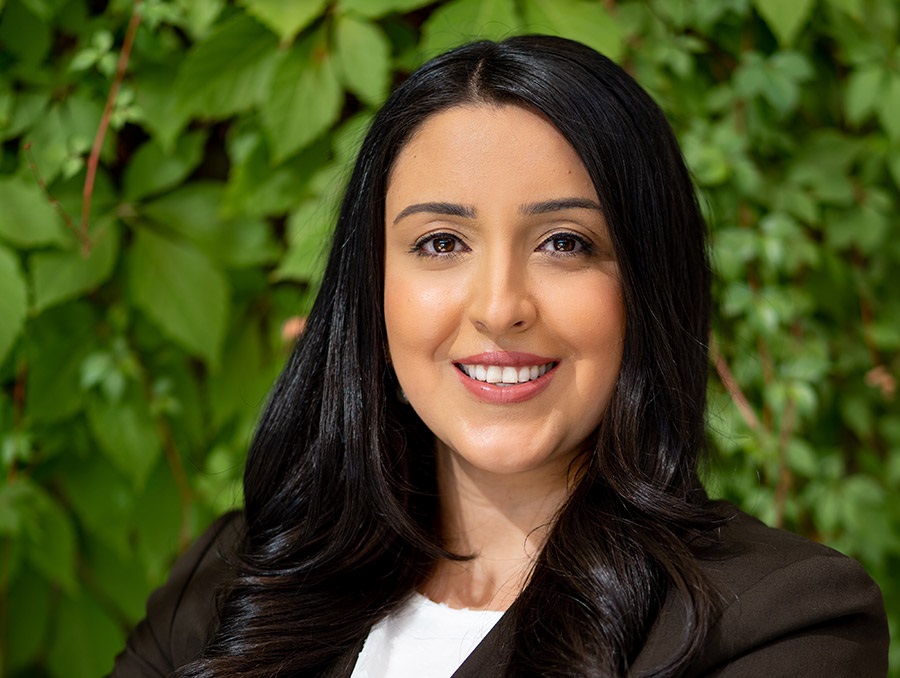
Elika Nematian will be working with southern Nevada communities to promote health and nutrition education and resources.
Extension has hired Elika Nematian in a newly created position to work with other Extension professionals to help assess the needs of communities in southern Nevada and pilot, implement and evaluate initiatives to promote good health and nutrition.
As the health and nutrition Extension educator for Clark County, Nematian will be helping to provide health and nutrition resources and education to community members of all ages. She also aims to tailor programs to meet needs of specific neighborhoods and zip codes, and broaden the reach of programs.
Nematian has an extensive background in both health and nutrition, and Extension. Throughout her career, she’s developed and piloted community nutrition programs; provided statewide trainings and technical assistance; written and managed government grants; and advocated for policies to promote good health, nutrition and food security at the local and federal levels.
Going forward, Nematian says she’s placing particular emphasis on collaboration. This includes working with other Extension professionals, as well as continuing to strengthen new and existing partnerships with community members.
Improving the health of Nevada communities
“We are looking at innovative ways to best share our resources and expertise with the community and stakeholders in Clark County. When providing resources, we really want to take a systems approach to improve the health of communities we’re working in.” - Extension Educator Elika Nematian
CABNR Immersed event introduces University students to Nevada agriculture
Beyond-the-classroom experience opens students’ eyes to sectors and research in the vital industry
Elisabeth Watkins
Last month, on Oct. 11, the College held a “CABNR Immersed” event open to all students to give students the opportunity to experience agriculture in a voluntary approach outside of the classroom. Eighty students attended the drop-in event held in the courtyard between the Max C. Fleischmann Agriculture and Sarah H. Fleischmann buildings.
Nevada Farm Bureau’s Woody Worthington handed students prizes, including squishy “stress-ball” sheep, for answering Nevada agriculture questions correctly. The University’s Young Farmers & Ranchers Club, led by Simon Solaegui, helped hand out ice cream cups donated by the Dairy Council of Nevada and Eat Beef bumper stickers and beef cookbooks courtesy of Nevada Beef Council.
Additionally, College faculty shared their research with students. Luis Schütz, from the Department of Agriculture, Veterinary & Rangeland Sciences, shared his research on bovine reproduction. Monika Gulia-Nuss and her research students representing the Department of Biochemistry & Molecular Biology presented their findings on fleas and ticks. Scott Allen from the Department of Natural Resources & Environmental Science brought ecohydrology equipment to demonstrate how pressures of plants are taken to determine watering levels.
Opening eyes to agriculture
"According to the U.S. Department of Agriculture, in 2020 on-farm employment accounted for 1.4 % of U.S. employment, contributing just over $134 billion to the economy. Agriculture plays a vital role in our economy. The CABNR Immersed event opened students’ eyes to various sectors and research areas." - graduate student Elisabeth Watkins
Nevada 4-H youth showcase projects, develop skills at State Expo
Event promotes excellence in responsibility, leadership and sportsmanship
Extension’s 4-H Youth Development Program hosted its State 4-H Expo Oct. 21-22 at the 3C Events Complex in Fallon, Nevada. Through the two-day event, youth showcased their 4-H projects and knowledge; earned recognition for their achievements; and learned from 4-H youth, leaders and professionals from across the state.
Competitive Expo events included small-animal, livestock-breeding, dog, horse and fashion-revue shows, as well as contests in 4-H knowledge, public speaking, shooting sports and crafting educational exhibits. There were also teen leadership workshops.
Workshop participants learned how to facilitate team-building games to increase trust and promote effective communication. “Explorers of the Deep” 4-H STEM Challenge participants used science, technology, engineering and math (STEM) to explore Earth’s oceans with robots. The youth developed observational and critical thinking skills, while learning about the relationship between Earth’s oceans and the global climate.
Promoting leadership and sportsmanship
“Expo showcases the hard work our 4-H members have put into their projects through lighthearted competition. The event promotes and provides incentive for 4-H members to achieve excellence in sportsmanship, leadership and responsibility. Attendees were encouraged to remember the 4-H motto, ‘Make the Best Better,’ and have fun, make new friends and learn!” – State 4-H Youth Development Program Director Carrie Stark
The not-so-micro problem of plastic pollution, and how you can help
College and Desert Research Institute scientists explore long-lasting, worldwide, toxic pollutant
Sarrah M. Dunham-Cheatham and Monica Arienzo
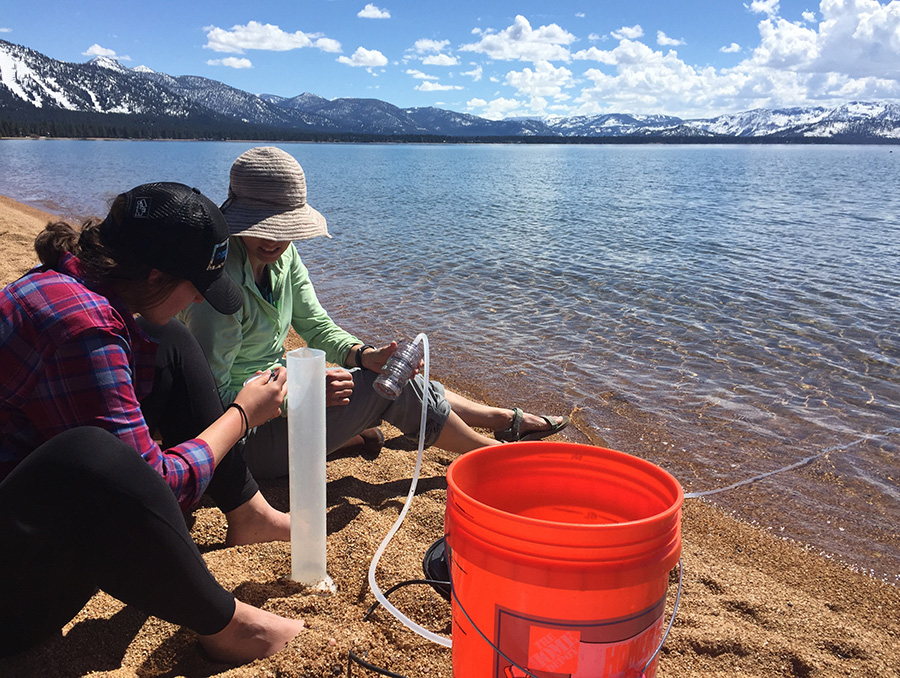
Researchers sample for microplastics in Lake Tahoe. Photo by Meghan Collins.
Plastics can be found in your car tires, clothing, food wrappers, disposable water bottles, paint and even some tea bags. Often, plastics offer convenience in our busy lives, and they are cheap and disposable. But what happens to the plastic we discard?
The honest answer: most plastics are added to landfills, where they will take decades or centuries to break down. Despite producing more plastic each year, the trend for recycling plastics is decreasing, with 83.6 million tons of plastic released to the environment each year. Ultimately, most plastic pollution is washed into the oceans, where it sinks to the ocean floor or accumulates at the ocean surface.
The plastic materials are broken down into smaller pieces, called microplastics. These smaller plastic particles are lighter than larger plastic debris, making it easier to transport them in the environment and expanding the area they can impact.
There are shocking images of dissected fish stomachs full of small plastic particles, but the effects of microplastics on wildlife is just the start of the issue. Because of their small size, microplastics are extremely difficult to clean up and can carry more toxins than larger plastic debris.
All of this leads to not only the presence of a long-term pollutant, but the presence of a pollutant that is globally transported, difficult and costly to remove, and potentially carries large amounts of toxic chemicals with it in the environment.
Environmental science student-researcher investigates microplastic pollution
Nicole Choma’s first open-water dive introduced her to the serenity of aquatic ecosystems, but also to the unfortunate results of hurricane damage and human impacts. This experience motivated her to major in environmental science in the College so she could protect the oceans.
With the College’s Sarrah Dunham-Cheatham as her primary mentor, Choma is investigating the absorption and desorption of mercury from microplastics and the aquatic ecosystem.
Investigating global issues
“Microplastics are everywhere. We should know what’s being carried on them, because that can change how we think about what's going into our bodies, what's going into our food, what's going into our plants.” - student researcher Nicole Choma
Innovating for Nevada
Our programs work together to make an impact
Our teaching, research and engagement programs are intertwined and complement one another. Faculty who teach on campus also conduct research as part of our Experiment Station, allowing students to learn about and participate in research. Extension faculty engaging with communities identify research needs, as well as join Experiment Station faculty to conduct research. Faculty on campus help to develop Extension programs in communities.
